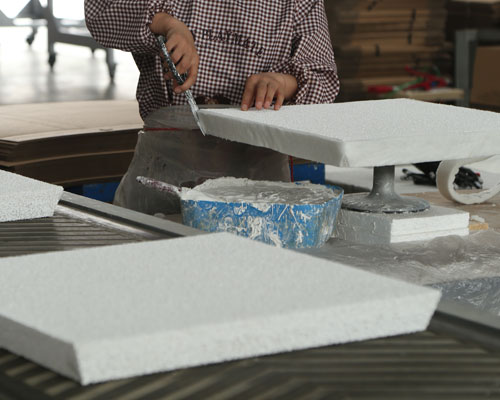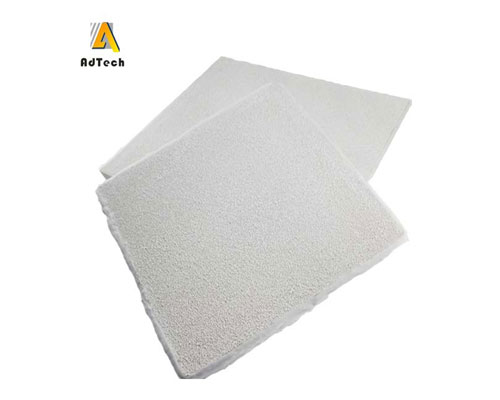Filtering technology of ceramic foam filters can effectively achieve the purpose of purifying liquid casting alloys. In casting production, the casting rejection rate due to casting defects such as non-metallic inclusions is generally as high as 50% to 60% of the total number of rejects. Inclusion defects not only seriously reduce the mechanical properties of the casting, but also have a harmful effect on its processing performance and appearance. Purifying liquid casting alloys and reducing or eliminating various non-metallic inclusions is undoubtedly a very important technical measure to obtain high-quality castings.
It is a filtering technology for nearly two decades to install a filter device on the casting system of the casting. In the beginning, people used oil sand or clay sand to make sand cores with holes, generally round or square, with a thickness of 10-20 mm, and used after drying. It is usually placed at the upper or lower end of the sprue and in the cross runner to filter the residue, but the oil sand or clay sand filter has poor resistance to high temperature molten metal erosion, and its use is limited. Later, fiber and metal filter screens have been widely promoted and applied. They are very convenient to use, but their high temperature resistance and filtering effect are still not ideal, and their wide use is also restricted.

With the development of science and technology, as well as the improvement of the cleanliness of casting metal alloys and the improvement of casting performance requirements, in the past 10 years, a new type of foam ceramic filter has been applied in casting production, which has brought quality to the filtration of molten metal. The high-quality ceramic foam filter plays a very important role in improving the quality of castings. It can effectively filter out the primary and secondary liquid solid non-metallic inclusions in the molten metal, thereby reducing slag holes, improving the mechanical properties of the castings, and reducing the Machining allowance, improve the surface finish of castings, and extend the life of machining tools.
The ceramic foam filter uses polyurethane foam as the carrier. After hydrolysis, it is immersed in a coating made of ceramic powder, binder, sintering aid, suspending agent, etc., and then squeezed out the excess coating to make the ceramic coating evenly coated. It is applied to the carrier skeleton to form a green body, and then the green body is dried and fired at a high temperature.

